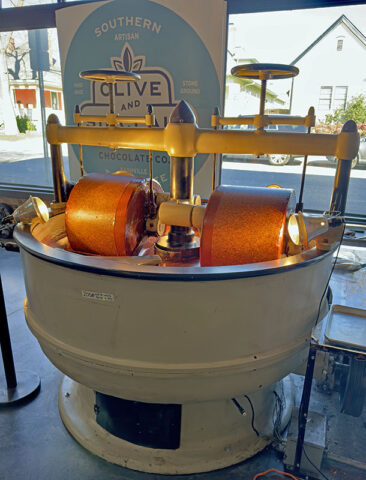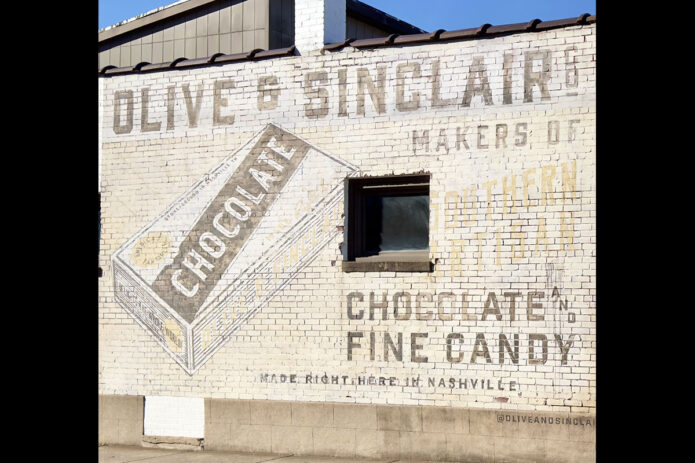Written by Christie Crawford
 Clarksville, TN – Chocolate and Valentine’s Day. The two seem to go hand in hand, especially when you envision a heart-shaped box full of luscious confections. But believe it or not, a box of chocolates is a fairly modern concept.
Clarksville, TN – Chocolate and Valentine’s Day. The two seem to go hand in hand, especially when you envision a heart-shaped box full of luscious confections. But believe it or not, a box of chocolates is a fairly modern concept.
Dating back to to prehistoric Mayan and Aztec cultures, the “Food of the Gods” as it was known, was consumed only by the elite members of society and at one time used as a form of currency.
The cocoa bean or its true name, cacao, was served only as a cold beverage paired with chili pepper. It wasn’t until Aztec explorer and conquistador Hernán Cortés presented cocoa beans to the high court in Spain under Charles V that the concept of hot chocolate was born.
The Spanish version eliminated pepper in favor of sugar and cinnamon and became a favored aperitif. Hot chocolate then became all the rage in Europe in the 1700’s with chocolate houses springing up in France and London, where at one time the establishments numbered 700.

The Victorian period saw Valentine’s Day as a revered holiday, with lavish gifts and cards marking the day. It was in this period that the boxed chocolate concept was created. Richard Cadbury, 1740, a descendant of the long-standing British candy company, discovered a new technique in making chocolate: the process of separating cocoa butter from the bean.
By doing so, he decided to market the new treat for the Valentine holiday along with a highly decorated heart-shaped box for packaging. It was a hit, and the boxes became collector’s items for letter and momento storage keepers.
Chocolate in 20th century America soared with Milton Hershey, father and son duo Frank C. and Forrest Mars of M&M Candies, and H.B. Reese getting into the game. Although WWII temporarily saw the chocolate industry wane due to sugar rationing, and chocolate is still as popular today.
Today’s chocolates are a rethink of chocolate long ago. The rise of the artisanal chocolate maker, and the bean-to-bar concept are growing. Characterized by small-batch production, with traditional methods and high-quality ingredients, crafting chocolate starts with sourcing the cacao bean from farms across the world.
The bean-to-bar process keeps all the steps of making chocolate in-house, including the selection of cacao and roasting the bean into a nib, which is ground into a paste known as liquor. This paste is then conched, a term describing the process of adding sugar and cocoa butter to create smoothness and lowered acidity. Tempering is then done to create a glossy shine and stabilize the fats, solids and sugars, allowing the chocolate to snap when broken.

I recently went to visit one such artisan, middle TN native Scott Witherow, at his facility in East Nashville called Olive and Sinclair. It is the first bean-to-bar company in Tennessee.
Witherow has a long-standing background in the culinary industry, having attended Le Cordon Bleu in London and having years of restaurant experience in the US and London. He got his love of chocolate from his pastry skills, both in the field and as an instructor. He never liked the quality of chocolate he was using, and in 2007 decided to make his own, using cacao sourced from the Dominican Republic.
After balancing restaurant work, teaching, and making chocolate in his spare time, he launched the full-time business in 2014 in an old HG Hill grocery turned Archway Cookie Company site.
Witherow’s “love of all things old “shows in his factory, retail showroom, and even in his
chocolate packaging. His antiquated equipment, from roaster to Melanguer (which grinds the cocoa nibs into liquor) truly means his chocolate is made the old-fashioned way.

But that’s where it ends. Olive and Sinclair’s chocolate offerings are as modern as you get, with duck fat caramels (boxed in packaging reminiscent of old retro shotgun shell boxes), Smoked Nib brittle utilizing Benton’s famous smokehouse in East Tennessee, and Bourbon Nib brittle, aged in Corsair distillery bourbon barrels, to name a few.
He is quick to point put out “that Olive and Sinclair prides itself on collaborations” from creating flavors to working with local companies. Even the husk from his cacao is used at local breweries such as Terrapin in Georgia and Jackalope in Nashville, where they make a tea for flavoring beer.
Olive and Sinclair chocolates can be found online at www.oliveandsinclair.com, Whole Foods locations in the South, and two locations in Clarksville: Mildred & Mables and Sango Pharmacy.
This Valentine’s Day, as you’re considering chocolate to celebrate the occasion, remember these wise words from the late cartoonist Charles Schultz, “All you need is love. But a little chocolate now and then doesn’t hurt.”



